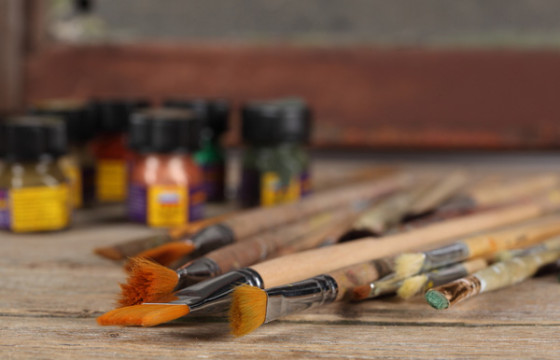The Painter’s Brush

The brush of a painter is an important tool through which the artist wields his power and expresses his emotions. The canvass, the oil, and all the other painting media are important too, but these leave the artist when the work is done.
Only the paint brushes stay, faithful and willing to participate in the making of the next masterpiece.
Painters need two kinds of brushes. One is stiff and the other is soft. A painter usually has a range of sizes for both types of brushes.
The stiff brushes are used for the majority of painting tasks and it comes in three shapes: the round, the flat and the filbert. For all ye art beginners, filbert is a shape that is rounded at the base and tapers to a point at the tip. Stiff brushes are made of hog bristles but there are also synthetic bristles available that can make acceptable results. Naturally, many painters prefer the genuine article.
The soft brushes are used for putting in fine details. Painters agree that the best soft brushes are the ones made of sable. Since sable brushes are expensive, there are substitutes available. But the brush strokes made using these replacements are not as good as the ones made by the sable-made soft brush.
There is also a kind of brush made of either sable or hog hair. It is called a fan-head brush and it is needed to seamlessly blend paint on the canvas.
We have heard of painters not taking a bath during a painting marathon, and there are painters known for having chaotic studios. But many painters like to be organized and the most cared for of their tools are the brushes. Besides, many painters believe, though no scientific data supports this, that used but well cared-for brushes perform better than new ones.
The first rule in caring for paint brushes is to never use them to mix paint. There are painting knives to do this task. Another important thing to remember is to never stand the brushes, especially the soft ones, with the point down in the jar. Those expensive hair or bristles are sensitive and may be bent permanently.
When a painter mentors you to place just the right amount of paint on the brush, he wasn’t thinking about saving the paint. He was trying to save the brush. Too much paint on it will clog the ferrules, the part that holds the hair or bristles together. If clogged, you have to clean it and cannot avoid parting the hairs. If done too often, the brush ultimately become useless.
Lastly, brushes should be cleaned as soon as you are done using them. You may use turpentine with soap and water. For soft brushes, these can be dipped in milk and allowed to dry for a couple of days. Remember to keep the tips up.







